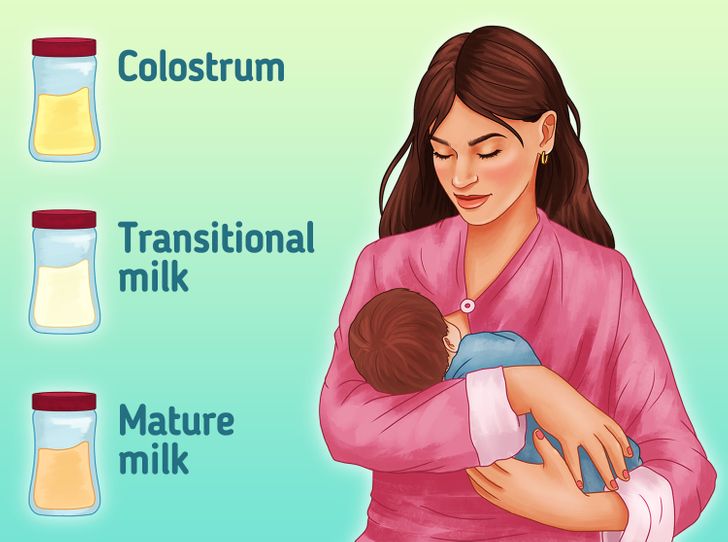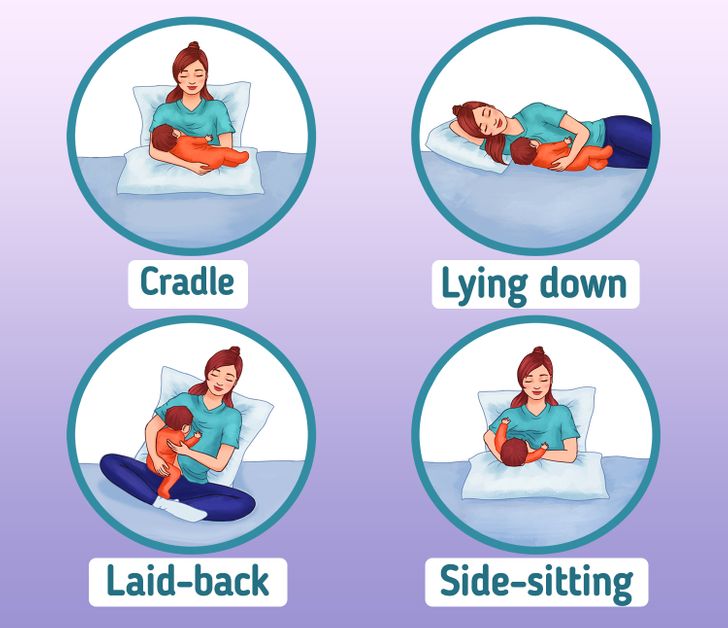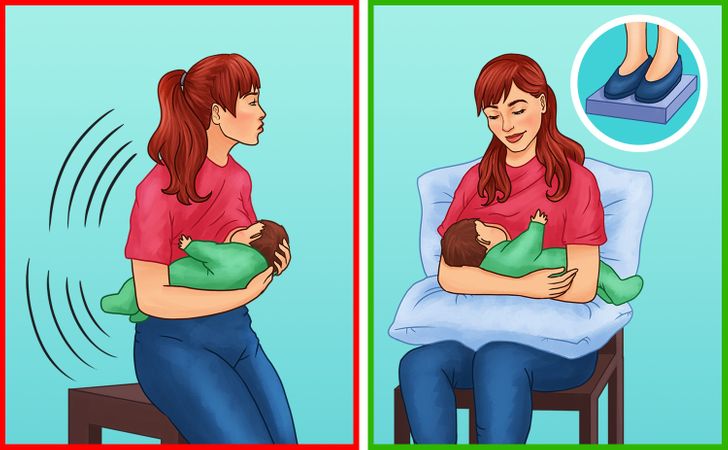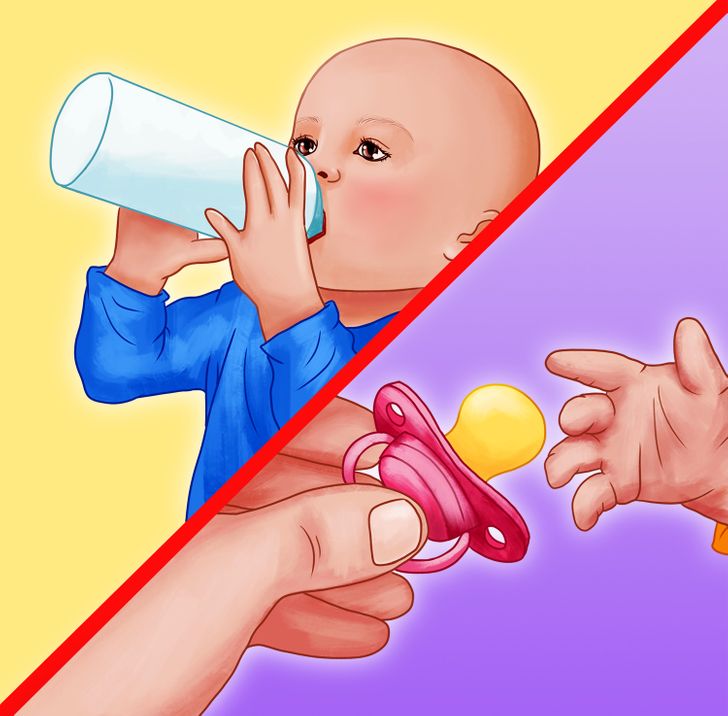How to Breastfeed: 7 Tips
Breastfeeding a baby is a natural and rewarding act for mothers who like doing it. However, first-timers may have some doubts about the best way to do it. This is especially true during those first days when you’re left alone with your newborn.
5-Minute Crafts wanted to share a few tips with you on how to feed your baby in an easy way. Keep in mind that this is purely for informational purposes and you should still consult with your doctor.
1. Prepare a dedicated space to breastfeed

During your pregnancy, set up an area at home where you can breastfeed comfortably and away from noise or distractions. Be sure to place a couch or chair near the crib so you can feed your baby and put him or her back to sleep during the night.
Your breastfeeding area should have these items:
- pillows or cushions to make breastfeeding easier
- bras designed for breastfeeding and lanolin-based nipple cream
- burp cloths
- baby wipes (alcohol-free and fragrance-free)
- baby clothing, bedding, and diapers
2. Initiate breastfeeding as soon as possible

Make sure skin-to-skin contact with your newborn happens right away. It is very important to breastfeed your baby during the first hour after birth. For this, ask a nurse or neonatal specialist to assist you.
This interaction will help regulate the child’s body temperature. It also facilitates and prolongs the breastfeeding period.
3. Identify the different types of breast milk

Your breasts will basically produce 3 different types of breast milk:
- Colostrum is produced for several days after birth. It is a viscous, yellowish liquid. You may notice that it’s produced in very low quantities, since the newborn’s stomach is very small, which will cause it to lose a little weight.
- Transitional milk is produced from about 2-5 days after birth until 10-14 days after birth.
- Mature milk is produced near the end of the second week of the baby’s life until the end of the lactation period.
Breast milk contains approximately 87% water, 7% lactose, 4% fat, and 1% protein.
4. Choose the most comfortable position for you and your baby

There are several breastfeeding positions to choose from as long as it helps you feel comfortable with your baby. You can try a few positions and use them according to your needs.
The most common positions are:
- Cradle hold. Your arms hold the baby to your chest. Place your baby’s head near your elbow and, with the same arm, support their back and neck.
- Lying down. Rest on your side facing the baby, the baby’s mouth is aligned with your nipple. You can rest your back and neck on a pillow while breastfeeding.
- Laid-back hold. Before you begin the feeding, lie back on a couch or the bed. You need to have a semi-reclined position, not completely laid back. Position your baby’s feet between your legs and their head near your breasts. You can bring your knees up to help with maintaining this position.
- Side-sitting hold. If you are recovering from a cesarean section or if you have large breasts, this position will be comfortable for you. With your elbow bent, place your baby next to you at waist level. Hold their head with your open hand and their back on your forearm, as if you were holding a football.

⛔ Avoid sitting without a backrest or looking down at your baby all the time since it can cause you serious neck and back pain.
✅ Sit up straight and make sure you’re comfortable. Rest your back against the back of a chair. Place the baby on a pillow or cushion so you can rest your arms while holding the baby. Put your feet up on a stool to keep your lap flat.
5. Help your baby pass gas

After you breastfeed your baby, help them release the air they have inhaled. This air turns into gas that may cause discomfort and vomiting. If you notice your baby squirming or pulling away while you feed them, they may need to burp.
You can do this in several ways:
- Place a cloth over your shoulder, and position the baby on it while holding their head and neck with one hand. With the other hand, rub their back in a firm motion.
- Sit the baby on your lap and lean them slightly forward, facing away from you. With your free hand, gently pat your baby on the back.
6. Know your baby’s hunger cues

During the first few weeks, many newborn babies require breastfeeding every 2 to 3 hours.
Pay attention to signs that your child is hungry:
7. Avoid using a bottle and pacifier as much as possible

- The American Academy of Pediatrics recommends delaying the use of a pacifier or bottle until breastfeeding is well established, usually 3 to 4 weeks after birth.
- Once your baby is accustomed to a breastfeeding routine, you can use a pacifier. This accessory is helpful, especially at bedtime, as it will reduce the risk of SIDS.
- If you are having difficulty producing breast milk, consult your doctor about ways to promote milk production and, if necessary, use milk substitutes or formula according to your baby’s needs.
5-Minute Crafts gets commissions for purchases made through links in this post.